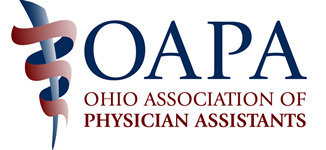Complete Story
10/21/2025
Ohio PAs: The Future of Quality, Accessible, and Cost-Effective Patient Care
PAs are masters-level educated, nationally board certified medical professionals who play a critical role in Ohio's healthcare workforce.
PA Facts & Figures
Ohio
- Nearly 6,700 PAs licensed by the State Medical Board
- 36% growth since 2021 (compared to 5% growth for Ohio physicians)
- 17 PA programs at Ohio colleges/universities, among the highest volume across the country
Nationally
- Nearly 190,000 PAs across all 50 states and DC (American Academy of Physician Associates)
- Projected growth from 2024 to 2034 is 20%, much faster than average for all occupations (Bureau of Labor Statistics)
- Median annual wage was $133,260 in May 2024 (Bureau of Labor Statistics)
- #2 Best Health Care Job, #3 Best Top 100 Jobs (U.S. News and World Report, 2025)
PA Education
- Students enter PA school with prerequisites similar to medical school and then complete accredited, graduate-level programs lasting about 27 months, resulting in a master’s degree.
- The curriculum features intensive instruction in core medical sciences and over 2,000 hours of supervised clinical training in various specialties, including family medicine, internal medicine, pediatrics, and more, with a focus on primary care in diverse settings.
- There is one national accrediting body (ARC-PA) for PA programs.
PA Licensure and Certification
- Ohio PAs are licensed by the State Medical Board.
- There is one national certifying body (NCCPA) for obtaining and maintaining professional certification as a PA, ensuring high-quality, nationally consistent standards for the PA profession.
- PAs must earn 100 CME hours every two years to maintain licensure and pass a recertification exam with NCCPA every 10 years to maintain certification.
PA Practice
- PAs can see patients similarly to physicians by performing physical exams, ordering tests, diagnosing, initiating treatments, prescribing medications, and assisting in surgeries.
- PAs practice across every specialty and in every healthcare setting.
- PAs can significantly reduce wait times, broaden access in rural and underserved areas, and effectively lower healthcare costs.
Supporting HB 353 will change the title of the PA profession from "physician assistant" to "physician associate" to better reflect the vital role that modern day PAs play in healthcare, without any change to scope of practice.
What is HB 353?
- HB 353 is a straightforward, nonpartisan effort to bring Ohio’s laws in line with the current realities of medical practice.
- Its sole purpose is to update the title from Physician Assistant to Physician Associate to reflect the role PAs already perform on healthcare teams.
- This legislation does not change the scope of practice for PAs. It does not expand PA authority or alter supervision requirements.
- HB 353 updates outdated language to more accurately reflect how PAs are educated, trained, and already working in healthcare settings across the state.
Why "Associate"?
- The title of the profession was changed at the national level as a result of a multi-year, research-driven process that concluded patients are better served when the PA role is accurately represented.
- “Associate” better reflects what PAs actually do: diagnose, treat, prescribe, interpret tests, assist in surgery, and manage patient care, not administrative duties.
- Patient perception matters. Updating the title aligns PAs with other professions whose titles match their training, responsibilities, and role on the care team.
Bottom Line
The title “Physician Associate” strengthens transparency, accuracy, and patient trust without changing scope of practice or regulation. Opposition arguments are fear-based, not evidence-based. Please see our myth vs. fact resource for more.
Modernizing PA practice by removing outdated laws and administrative barriers is essential to improving healthcare access in Ohio, particularly in rural and underserved communities.
Why Modernizing PA Practice Matters
- Outdated laws and administrative barriers limit how PAs can help meet Ohio’s growing healthcare needs, especially in rural and underserved areas.
Updating PA Practice Laws Will...
- Improve Access to Care: Ohio faces provider shortages statewide. Allowing PAs to work to the full extent of their training helps reduce wait times and brings timely care closer to home.
- Strengthen Team-Based Care: Modernization supports collaboration with physicians and other providers, reflecting how healthcare is delivered today.
- Cut Administrative Delays: Removing outdated requirements frees providers to spend more time with patients and less on paperwork.
- Support a Skilled, Stable Workforce: PAs are highly trained. Modern standards ensure appropriate collaboration early in practice while allowing experienced PAs to serve where they’re needed most.
- Keep Ohio Competitive: Many states have already updated their laws. Aligning with national standards helps Ohio attract/retain top clinicians and sustain high-quality care.
Ready to learn more? Please reach out to oapa@ohiopa.com or 614-999-9202 to discuss.

